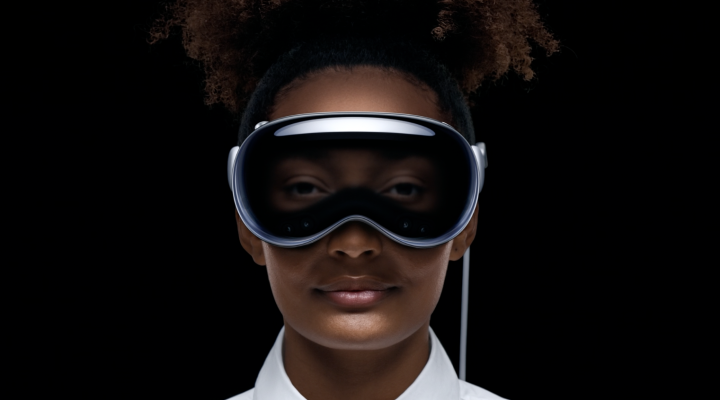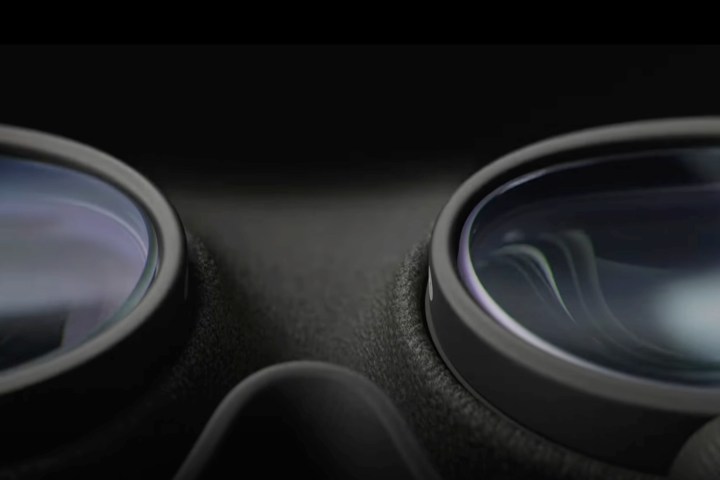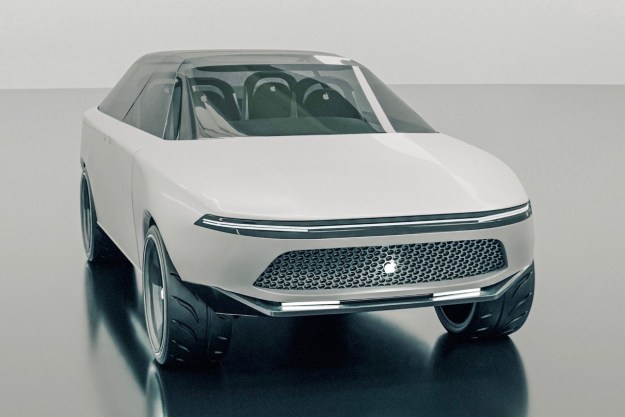
I’m hugely excited about the Apple Vision Pro, but I’m also aware of how much of a risk it is. Not because it’s a hugely expensive VR headset — but because I wear spectacles to correct my vision. I’m not alone either, obviously. The Vision Council claims more than 166 million adults in the U.S. do the same, and the number may reach 2.2 billion when the entire world is taken into account.
Apple needs to take spectacle wearers as seriously as it does the technology inside the Vision Pro and the 23-million-pixel displays we will stare at. Because if millions of people aren’t reassured right from the start that they will comfortably be able to see what’s going on, then they simply aren’t going to buy it.
Why it’s a pain

If you wear glasses, you already know it can be a pain to use some VR headsets. A lot depends on the shape of your frames and whether they fit inside the headset when you’re wearing them. Most of the time, it’s acceptable, but if any part of the headset rests on the frames, it soon becomes very uncomfortable. Because our vision needs are unique to us personally, the visual experience can differ depending on the prescription and the type of vision correction you need.
Of all the headsets I’ve used, Sony has come up with the neatest, most comfortable solution to the problem with the PlayStation VR and PlayStation VR2. They are excellent right out of the box, and I’ve never had major problems with fit or clarity. However, they’re not perfect, as my personal prescription does introduce some blur and focus issues around the edge of the display. It’s manageable, though, and far better than some other solutions.

At the other end of the spectrum is TCL’s NXTWEAR G, which can’t be used with glasses at all due to its design. Instead, the solution is to use a magnetic attachment with your own prescription lenses inside. The accessory is included in the box, but it’s down to you to find somewhere to make and fit the right lenses — and to swallow the extra cost. Ahead of the Vision Pro’s announcement, rumors pointed to Apple doing something similar, which didn’t bode well at all. So what’s the situation?
How Apple is dealing with it

Due to the Vision Pro’s design, you won’t be able to wear glasses with it, and the eye-tracking system may get confused by reflection from their lenses anyway. It means you have to take your glasses off to wear the Vision Pro, and for a lot of people, that means not being able to see properly. Like the NXTWEAR G, magnetically attached lenses will correct your vision inside the Vision Pro, but rather than the single, spectacles-like piece used by TCL, these will be individual lens attachments.
“Users with vision correction needs will use Zeiss Optical Inserts to ensure visual fidelity and eye-tracking accuracy,” Apple writes on its website. According to those who tried the headset at WWDC 2023, there were Zeiss lenses with different specifications on hand for the demo, and they were matched to get as close to the wearer’s prescription as possible. When the Vision Pro goes on sale, it’s likely to be a more personalized option.

First, congratulations to Apple for talking about vision correction rather than glossing over it as an inconvenience — and for announcing a partnership with lens experts Zeiss. It’s set to take a lot of the hard work out of getting lenses for a headset and is a great start. But there are still a lot of unanswered questions, the biggest being cost. Anyone who wears spectacles knows how expensive they can get, especially if your prescription is fairly complex. Apple has not announced any prices at this time, so we can only speculate.
Zeiss is well known as one of the best lens makers, but its products aren’t cheap. When I last purchased new spectacles, Zeiss was the most expensive option on the list. Back when I bought Google Glass, I had lenses (not made by Zeiss) made for Google’s optional frames, and at the time, the cost was the equivalent of a $400 Apple Watch Series 8. But things have changed, and there are stores online that make lens attachments for VR headsets with your prescription for less than $100, but these are almost certainly not Zeiss lenses and probably won’t meet Apple’s exacting hardware and build standards either.
Cost is just the start

The Apple-sanctioned, Zeiss-made prescription lens attachment may not be hard to get, but it will increase the cost of the Vision Pro. However, if you’re happy to spend at least $3,500 to get one next year, you’re unlikely to be put off by spending a few hundred dollars more to see what’s going on. Getting lenses for the Vision Pro will also likely increase the wait time, especially if your prescription doesn’t fit off-the-shelf options. You’ll also have to buy multiple sets if other members of your family also wear glasses and you intend to share the same headset with them.
I’m also unsure about fitment. Corrective lenses work differently when they are further away from your eyes, and some VR headsets come with spacers to bring the lenses closer to your eyes. There is no one-size-fits-all option with corrective lenses, and buying spectacles without trying them on or without an optician’s fitting advice is a risky business. If I spend all that money on the Vision Pro, I don’t want to spend weeks or months going back and forth with Apple and Zeiss trying to get the lenses right.
What about future versions? Will the lens size and shape stay the same on Vision Pro 2 or Vision Pro 3, so your personalized, magnetically attached spectacles will still fit even if you upgrade? Apple has a decent track record here, with the Apple Watch strap size and attachments fitting all models from the very first one to the Apple Watch Ultra, but an iPhone 13 Pro case won’t fit an iPhone 14 Pro, no matter how similar the pair may look.
Another issue is that our vision doesn’t stay the same, and prescriptions regularly change. When this happens, Apple Vision Pro owners will have to either put up with a slightly out-of-date prescription inside the headset or add a new set of Zeiss lenses to the list when pricing up a new pair of spectacles.
Apple needs to take vision very seriously

These are just a few of the biggest considerations a lot of people will have to take into account before buying a Vision Pro headset. It’s not an Apple-specific issue and is a problem for headsets in general, but Apple clearly envisages the Vision Pro eventually becoming somewhat commonplace, so it needs to get the vision correction problem right from the beginning. Vision is in its name, after all, and it’s not like an iPhone, where I can shift its position to ensure I get a crisp, clear view.
What can Apple do? For a start, it should bundle the Vision Pro with a basic pair of corrective Zeiss lenses and not charge extra unless the prescription is especially complicated. If more than 75% of people in America wear glasses with a prescription, offering this incentive would go a long way toward encouraging early adoption in 2024. It would also give people outside the U.S., where the Vision Pro will launch later on, more confidence to get one immediately after it’s available.
Apple should also provide a custom, optician-led fitting service in its retail stores. Apple has these stores for a reason — to experience its products in the best environment possible — and now it’s entering a space where seeing clearly is essential to purchasing and enjoying a product. Apple retail stores need to become a one-stop shop for the Vision Pro, regardless of whether the purchaser wears glasses or not.
The Vision Pro as a piece of hardware is already challenging enough, and it’s going to take a lot to encourage regular people to wear it. By removing as much friction from the issue of corrective vision as possible, Apple will further separate itself from the competition and show millions of people how seriously it’s taking what is its biggest product launch in more than a decade.
Editors' Recommendations
- The Vision Pro is already in trouble. Here’s how Apple can turn the tide
- This new VR headset beats the Vision Pro in one key way and is half the price
- How Vision Pro tech could come to the Mac
- This one feature could prevent motion sickness, but the Vision Pro doesn’t have it
- Nvidia and Apple are collaborating on the Vision Pro in the most unlikely way





